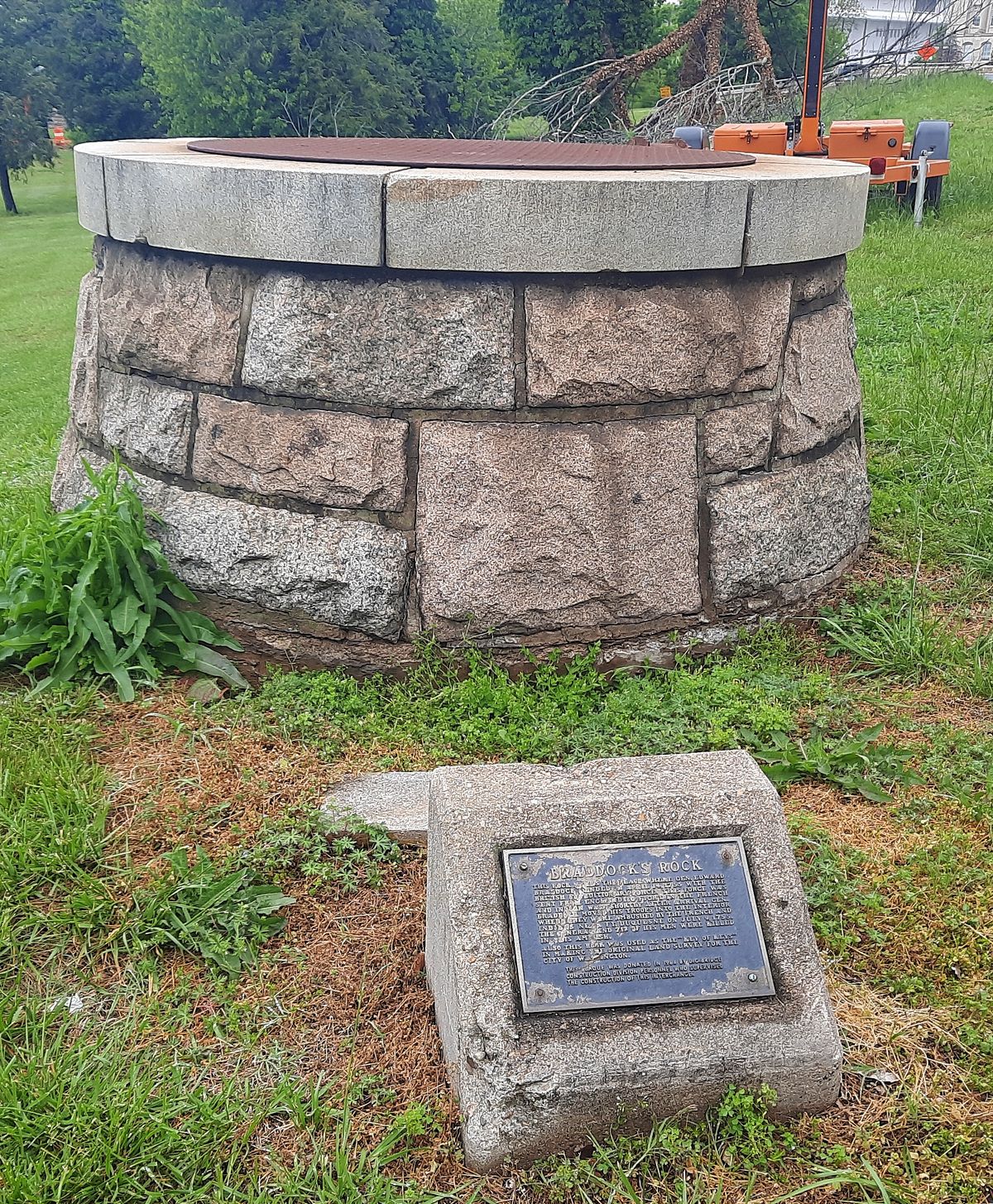About
Across an on-ramp from the U.S. Institute of Peace stands what looks like an oddly-placed well. Read the nearby plaque, however, and you'll discover you are standing 16 feet above history.
Braddock's Rock derives its name from General Edward Braddock, who supposedly used it as a landing spot on April 14, 1755, for a British Expeditionary Force sent to fight in the French and Indian War. It is probably not true that General Braddock landed on the rock—it wouldn't have made much sense to land in this spot. The mission also had an ignominious end when it was ambushed near Fort Duquesne, in what is now Pittsburgh. However, the campaign launched the military career of future U.S. president George Washington, who was serving as an aide-de-camp to General Braddock.
The next major role for Braddock's Rock was as the "Key of Keys" for the survey of Washington, D.C. As a prominent fixed landmark, it served usefully as a reference point for surveyors laying out the future capital.
The subsequent success of the city led to the demise of Braddock's Rock, as it was blasted apart for building material (including the foundations of the Capitol and the White House) and then eventually to make way for the Chesapeake and Ohio Canal. It came to be in its present state in 1964, when it was covered by the construction of the on-ramp but protected by the well-like structure that now caps it.
Related Tags
Know Before You Go
Braddock's Rock is by the side of the onramp to I-66 from Constitution Ave NW and next to the US Institute for Peace.
Community Contributors
Added By
Published
May 25, 2023
Sources
- https://www.mountvernon.org/library/digitalhistory/digital-encyclopedia/article/edward-braddock/
- http://allenbrowne.blogspot.com/2011/02/braddocks-rock-key-of-keys.html
- https://www.hmdb.org/m.asp?m=197126
- https://mallhistory.org/items/show/309
- https://www.washingtonpost.com/local/braddocks-rock-launching-point-for-a-military-expedition-or-a-mere-legend/2014/02/15/18d531e4-9595-11e3-8461-8a24c7bf0653_story.html




























